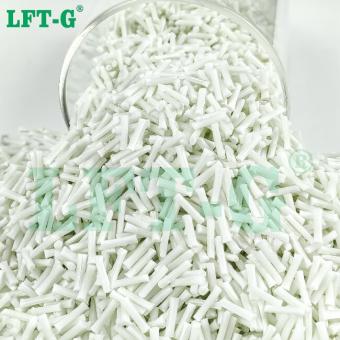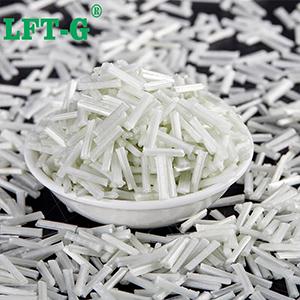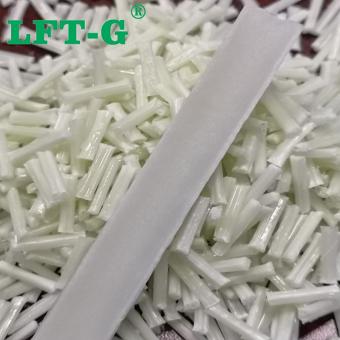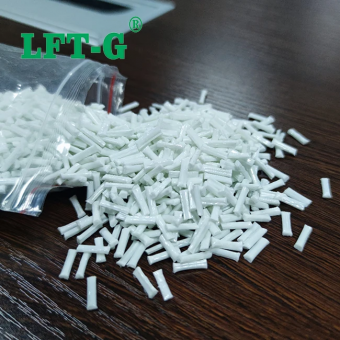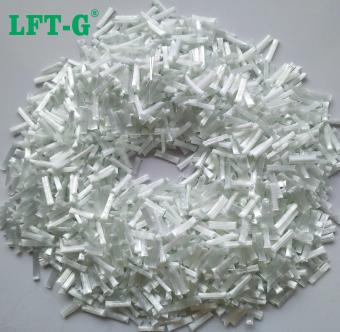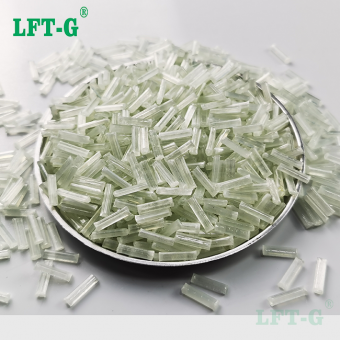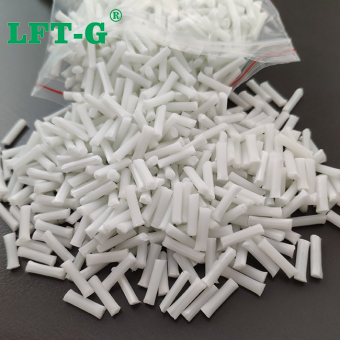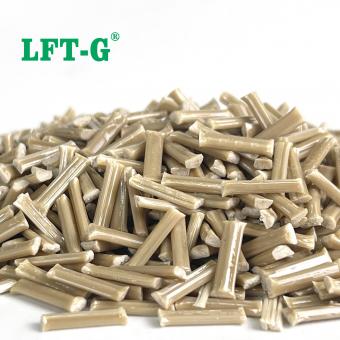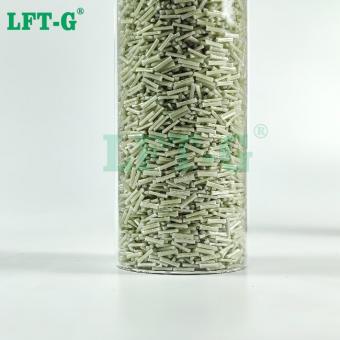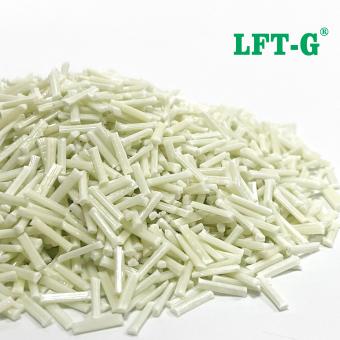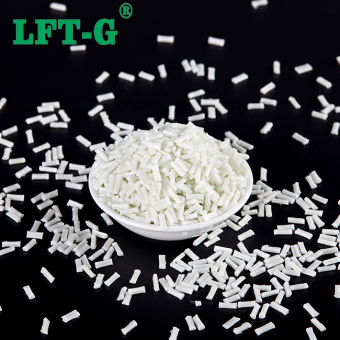Long glass fiber has high strength, high rigidity, corrosion resistance, harsh environment suitability and low cost. When the resin matrix is impregnated and extruded into pellets ,Also called Long Glass Fiber Polymer it has good mechanical properties.
-
PP Pellets Glass FiberIn the manufacturing industry, in order to match some output products that require higher quality than usual, manufacturers will mix into PP plastic with glass fiber. These two different forms of glass enhancement are inherently tough and durable, so when mixed, glass-filled polypropylene materials become lighter and stronger.
- pp polypropylene
- polypropylene polymer
- polypropylene with glass fiber
- polypropylene polymer structure
- polypropylene homo polymer
- gfrp
Tags :
-
Xiamen LFT-G Polypropylene filling long glass fiber high performance modified plastic 12mmPP-LGF Glass fiber reinforced PP, usually, the tensile strength of PP material is between 20M~30MPa, bending strength is between 25M~50MPa, bending modulus is between 800M~1500MPa. If PP is to be used in engineering structural parts, it must be reinforced with glass fiber. Glass fiber reinforced PP, through glass fiber reinforced PP product mechanical properties can be multiplied or even several times the improvement. Specifically, the tensile strength reaches 65MPa~90MPa, the bending strength reaches 70MPa~120MPa, and the bending modulus reaches 3000MPa~4500MPa. Such mechanical strength can be completely comparable with ABS and enhanced ABS products, and it is more heat resistant. Glass fiber reinforced PP, general ABS and reinforced ABS heat resistance temperature between 80℃~98℃, and glass fiber reinforced PP material heat resistance temperature can reach 135℃~145℃. PP filling modification, adding a certain amount of inorganic minerals in PP, such as talcum powder, calcium carbonate, titanium dioxide, mica, etc., can improve rigidity, improve heat resistance and luster; Filling carbon fiber, boron fiber, glass fiber can improve the tensile strength; Adding flame retardant can improve flame retardant property. Filling antistatic agent, colorant, dispersant, etc. can improve the antistatic property, colorability and fluidity, etc.; Filling nucleating agent can speed up the crystallization speed, increase the crystallization temperature, form more and smaller spherical crystals, thus improving the transparency and impact strength. Therefore, the filler has a significant effect on improving the performance of plastic products, improving the plastic molding processability and reducing the cost. Application As one of the four general plastic materials, PP has excellent comprehensive performance, good chemical stability, better molding performance and relatively low price; But it also has the strength, modulus, hardness is low, low temperature impact resistance strength is poor, forming shrinkage, easy aging and other shortcomings. Therefore, it must be modified so that it can adapt to the demand of the product. The modification of PP material is generally through adding mineral reinforcement toughening, weather resistance modification, glass fiber reinforcement, flame retardant modification and super toughness modification, and each kind of modified PP has a large number of applications in the field of household appliances. Glass fiber reinforced PP, can be used to make refrigerators, air conditioning refrigeration machines such as axial flow fans and cross flow fans. In addition, it can also be used to manufacture the inner drum of high speed washing machine, wave wheel, belt wheel to adapt to its high requirements on mechanical properties, for the rice cooker base and handle, electronic microwave oven and other places with high requirements on temperature resistance. Glass fiber reinforced PP. Ordinary short glass fiber reinforced PP, because the glass fiber contains short, easy warping, low impact strength, easy deformation when heated, long glass fiber can overcome the above defects of short glass fiber, and the product has a better surface, higher temperature, higher impact strength, can be used in refrigerators and kitchen appliances with high heat resistance. Glass fiber reinforced PP is on the basis of the original pure PP, adding glass fiber and other additives, so as to improve the scope of use of materials. Generally speaking, most glass fiber reinforced materials are used in the structural parts of the product, which is a kind of structural engineering materials. Datasheet Cases Xiamen LFT composite plastic Co., Ltd. Xiamen LFT Composite Plastic Co.,LTD was established in 2009, is a brand-name global suppliers of long fiber reinforced thermoplastic materials integrating product research & development(R&D), production and sale marketing. Our LFT products have passed the ISO9001&16949 system certification and have obtained lots of national trademarks and patents, covering the fields of automotive, military parts and firearms, aerospace, new energy, medical equipment, power wind energy, sports equipment, etc.
- long glass fiber polypropylene high performance
- pp injection molding composite
- PP resin compounds LFT GF
- pp lgf lft thermoplastic resin made in China
- lgf filling pp raw materials sample available
- pp industry use lft green materials
Tags :
-
Xiamen LFT-G High toughness MXD6 composite filling long glass fiber original colorNylon - MXD6 is a kind of crystalline polyamide resin, which is synthesized by the condensation of m-benzoylamine and adipic acid.
- Crystalline nylon resin mxd6 gf good price
- Composite materials with long glass fiber mxd6
- Higher performance plastic mxd6
- Made in China products compounds mxd6
- Customized plastic fiber glass add high sstrength mxd6
- Thermoplastic resin thermoplastic resin
Tags :
-
High Strength PBT Composite for Advanced Structural ApplicationsOur PBT Long Glass Fiber Reinforced Structural Composite Material combines high-performance Polybutylene Terephthalate (PBT) resin with long glass fiber (LGF) to create a material that delivers exceptional strength, heat resistance, and dimensional stability. This advanced material is designed for demanding applications in industries such as automotive, electronics, and industrial machinery.
- pbt properties
- lft plastic
- lft container color
- pbt fiber compounds
- polymer price per kg
- wholesale glass fiber reinforced plastic resin dispenser in china
Tags :
-
LFT High Density Polyethylene HDPE high performance Long Glass Fiber reinforcementHDPE has a higher density compared to other polyethylene variants, making it more rigid and stronger.
- Long Glass Fiber Reinforced HDPE
- High-Strength HDPE Composites
- Fiber-Reinforced Plastic (FRP) Materials
- Lightweight Composite Materials
- HDPE Composite Material Applications
- Thermoplastic Composites for Automotive
Tags :
-
LFT Long Glass Fiber Reinforced PLA Compounds Injection MoldingPolyphthalamide is a high-performance resin and member of the nylon family with exceptional thermal, mechanical, and physical properties. It is hygroscopic, opaque, semicrystalline, and can be used in plastic injection molding. Most PPA are filled with glass fiber or carbon fiber to enhance stiffness for high-temperature applications. As a result, PPA is often used in applications in place of metal or higher-priced thermoplastic.
- pla price per kg
- thermoplastic resin suppliers
- reinforced pla
- polylactic acid (pla) plastic
- pla pellets
Tags :
-
Xiamen LFT Thermoplastic Polyurethane TPU Long Glass Fiber filling composite industry productProduct number: TPU-NA-LGF Product fiber specificaion: 20%-60% Product features: High toughness, High toughness, Low water absorption, High dimensional stability, chemical resistance, good product appearance.
- Low water absorption price good
- footwear shoes uses
- Columnar particle safty plastic
- Natural color images sa
- Industrial supplies film automotive
- Sample available tpu 3d printing
Tags :
-
LFT-G modified ABS compounds Long Glass Fiber for automotive partsABS injection molding refers to the process of injecting molten ABS plastic into a mold at high pressures and temperatures. There are many ABS injection molding applications as it is a widely used plastic and can be found in the automotive, consumer product, and construction industries to name a few.
- ABS Long Glass Fiber Reinforced Polymer
- ABS long fiber reinforced
- lgf injection mold abs for engineering
- China manufacturer ABS GF fiber reinforced
- High-performance engineering plastic ABS composite
- Natural color abs materials with filler
Tags :
-
LFT Polyphenylene Sulfide PPS Manufacturer Glass Fiber filled Compounds engineeing use
- PPS thermoplastic resinforced material
- fiber filling polymer instead of metal steel
- Sample free natural plastic new GFRP
- engineering plastic structural parts
- modified resin good price low MOQ
- Car parts application bearings
Tags :
-
LFT China Manufacturer PPA Long Glass Fiber Reinforced PolymersPPA long glass fiber composites are high-performance thermoplastic materials that combine the durability and strength of glass fiber reinforcement with the superior properties of PPA engineering plastics, making them ideal for demanding industrial applications.
- PPA long glass fiber composite Polyphthalamide
- high-performance PPA polymer
- glass fiber reinforced thermoplastics
- PPA engineering plastic materials
- durable thermoplastic composites
- industrial PPA reinforced polymer
Tags :
-
High Temperature Resistant Nylon PPA with Filler Injection MoldingOur high-performance PPA (polyphthalamide) long glass fiber reinforced composite is engineered to deliver exceptional mechanical strength, thermal stability, and durability. Designed for demanding applications, this composite material offers a superior balance of stiffness, impact resistance, and processability. Ideal for automotive, electrical, and industrial applications, it sets a new benchmark in high-performance thermoplastic composites.
- ppa plastic price
- ppa gf30
- ppa plastic resin
- ppa compound
- ppa gf30 material properties
- China factory plastic supplier
Tags :
-
High rigidity and toughness Polyamide 12 filling long fiber compoundsPA12 PA12 polyamide or nylon 12 Chemical and physical properties of PA12 PA12 is a linear, semi-crystalline - crystalline thermoplastic material from butadiene. Its properties are similar to PA11, but its crystal structure is different. PA12 is a good electrical insulator and will not be affected by moisture as other polyamides. PA12 has good impact resistance mechanical and chemical stability. There are many improved varieties of PA12 in terms of plasticizing and reinforcing properties. Compared with PA6 and PA66, these materials have lower melting point and density, and have very high moisture recovery. PA12 has no resistance to strong oxidizing acids. The viscosity of PA12 depends mainly on humidity, temperature and storage time. PA12 It's very liquid. The shrinkage rate of PA12 is between 0.5% and 2%, depending on the variety of PA12 material, wall thickness and other process conditions. PA12 compounds plastic Nylon glass fiber material is a kind of composite material, adding glass fiber on the basis of the original nylon material, so that the material has the following characteristics: High temperature resistance, good dimensional stability, good toughness, good insulation, corrosion resistance, high mechanical strength. LGF & SGF comparison Compared with the short fiber, it has more excellent performance in mechanical properties. It is more suitable for large products and structural parts. It has 1-3 times higher (toughness) than short fiber, and the tensile strength (strength and rigidity) is increased by 0.5-1 times. Datasheet for reference Application ■ Power tools: cutting machine, electric saw, electric drill, Angle grinder, polishing machine, electric hammer, electric pick, hot air gun and other models; ■ Automotive industry: cooling chamber, intake manifold, frame bracket, ventilation grille, door handle, throttle body and other models; ■ Machinery industry: water pump, water valve, bearing, shaft sleeve, gear, bracket and other models; ■ Sports equipment: ski equipment, baby carriage, fitness equipment parts and other models; ■ Office equipment: seat bracket, pulley, rotating shaft, shredder gear, printer parts and other models. Certification Factory Why choose us
- composite panels for ev batteries
- reinforced polyamide plastic
- nylon 12 application
- nylon pa12
- pa12 gf20
Tags :

 e-mail
e-mail English
English français
français Deutsch
Deutsch русский
русский italiano
italiano español
español português
português العربية
العربية 日本語
日本語 한국의
한국의 中文
中文












